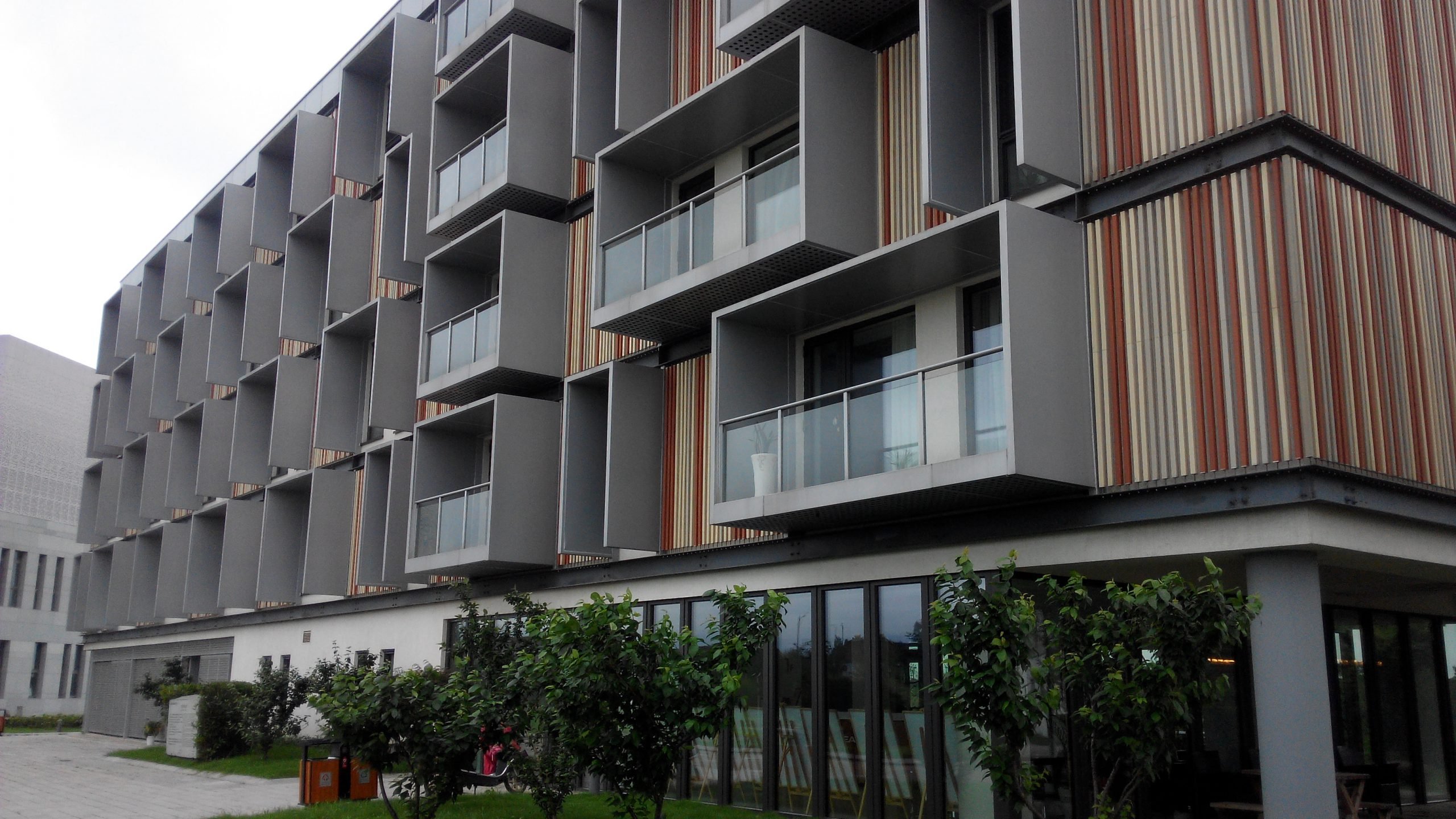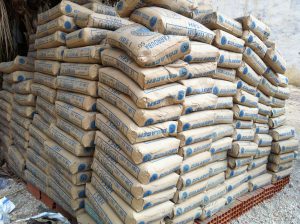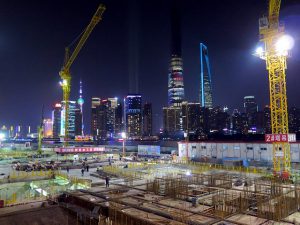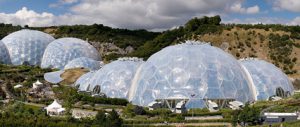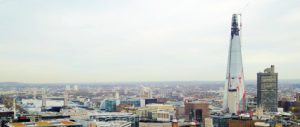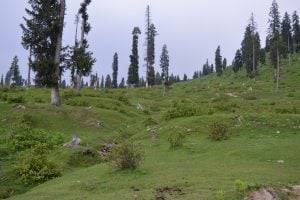Wei Zhang begins his presentation with a slide of striking images. On one half of the slide there’s a photo of a smoggy day in Beijing, where buildings are barely visible because of thick smog. On the other is the same skyline but with blue skies. They read: “damage” and “prosperity”, respectively.
For three decades industrialisation has been synonymous with economic progress in China, but the pollution produced by this model of growth has exacted a heavy toll on the environment and health, which is reversing peoples’ way of thinking.
See also: Sustainable urban planning is vital for cities and citizens
Shanghai-based Landsea is a design and engineering consultancy with a simple mission; to show people that housing (still a big driver of economic growth, and carbon emissions, in China) can be energy efficient, comfortable and affordable. Its objective is underpinned by a fundamental belief in sharing knowledge across borders.
As the public has become increasingly aware of the impacts of air pollution, tolerance of its disastrous effects has wilted. China’s urban dwellers want a better quality of life, and now, many can afford to pay for it. It is this desire for a more sustainable pattern of development that Landsea is responding to.
Around 1 billion (or roughly two-thirds) of China’s population are predicted to be living in cities by 2030. There is, therefore, a huge opportunity for low energy design and technology companies to cut both household bills and global CO2 emissions. But in China’s competitive housing market, to make sustainable building commonplace remains a big challenge, particularly for low cost housing.
At a ceremony held in London on June 9, Landsea received an Ashden Award for Sustainable Buildings; a prestigious international prize that recognises outstanding environmental contributions. It is the first Chinese company to do so in seven years.
Praised by judges for its “open source” approach and “scalability”, Landsea focuses on multi-level apartment buildings for high-density urban housing in central China, where homes have unique cooling and heating needs because of hot summers (up to 35C) and cold winters (down to -5C).
According to a case study on the Ashden Awards’ website, Landsea’s designs incorporate low CO2 design throughout its processes, including reducing the need for heating and cooling by insulation and airtight outer layers to buildings.
Landsea also makes use low-cost, sustainable energy supply technologies including solar water heating and ground-source heat pumps.
Homes are enhanced by daylighting, which makes the most of natural light to reduce the need for electric lighting. The buildings also incorporate the use of green areas and provide ventilation with filtered air that reduces the level of particulate matter indoors, a serious health problem in many of China’s cities.
Since 2011, Landsea’s designs have been used in over 30 building developments. Around 2.5 million square metres of housing has been constructed, benefitting around 78,000 people (or 24,000 households).
The company is also involved in green apartment blocks and homes outside China, including recent deals in California and Boston.
We caught up with Wei Zhang, environmental engineer and deputy general manager of Landsea, at the Ashden Awards.
chinadialogue: What single problem are you trying to solve?
Wei Zhang: We are trying to cut Waste from energy use by reducing consumption and using renewable sources.
CD: China’s renewable energy capacity is now the world’s biggest but the industry continues to be plagued by grid restrictions and distribution challenges. How do you overcome these in your designs?
With the development and upgrade of renewable energy these connection issues will be solved. Solar energy and wind power tend to be complementary. If you further integrate these with biomass and other sources of renewable energy then that strengthens the power of renewable energy and its generating capacity as a whole. I know of some companies in Shanghai working on this area at the moment. From the perspective of consumption, we obviously don’t want people to waste energy but nor do we want them to lower their living standards. It’s a balance.
CD: China’s latest Five-Year Plan stresses that the central government should back new green technology, which it hopes will be exported. Are your projects subsidised by the government at all?
WZ: Government policy has indeed provided us with good guidance, and we have benefitted from them raising the profile [of the sector]. We can see that the public has started to focus on [the environment] and now recognises us as a sustainable construction brand. Our colleagues in the same industry have started building an increasing volume of energy saving buildings and are trying their best to meet national standards.
On funding, we currently don’t have the need for government subsidies because the profits generated are enough to cover our day-to-day operations and reinvest in research and development.
CD: What is the most pressing environmental issue for people in China today?
WZ: The most urgent is air pollution. On a difficulty level this is the hardest to solve and most closely related to everyone’s everyday wellbeing because you can’t live without air. But air quality has very complicated ties with China’s energy structure, so to solve it requires both wisdom and courage.
CD: What is most unique about the technology you use in your buildings?
WZ: If you only look at the individual technology we use then there is nothing special. What gives us the advantage is our ability to combine different types of technology into one seamless design, without waste of conflict between different technologies.
Another advantage is that we have 15 years of experience , so the ones we use are mature and stable compared with those from other construction companies that have been in operation for only three or four years and who might use unproven or faulty technology. The group as a whole holds over 150 patents and Landsea Design as a sub company hold 20 patents.
CD: How did Landsea come about?
WZ: When we started we thought about how to differentiate ourselves and decided that taking the long view of focusing on sustainability would be of greatest value and importance to society.
At the very beginning, Landsea was actually quite lonely, not just among other developers but also in a wider sense, when many of the general public didn’t necessarily appreciate the importance of sustainability.
CD: Where have your projects been concentrated?
WZ: So far we’ve been focused in central China but we are moving into the north. We have worked in Shanghai, Jiangsu, Zhejiang, Hefei, Hubei, Sichuan, and Tianjin. Abroad we have worked in Laos, US and Germany.
CD: Are you considering working in rural areas as well?
WZ: Because China is big, we tend to find that the most beautiful areas in China are the most remote. I love travelling and often go to these remote areas to enjoy the scenery, and when I am there I don’t want to see it being ruined by modern development. China has a population of 1.3 billion people and wherever tourists go it’s very crowded and noisy. One of our next plans is looking at the tourism industry and how to minimise its damage to natural scenery while still providing a comfortable environment for visitors.
CD: The judges praised the ease with which your methods can be scaled up, which is critical in a country as big and a rapidly changing as China. What are the biggest challenges you face in rolling out your designs ?
WZ: One of the biggest challenges is internal; how do we stick to the direction we have chosen without being distracted by other opportunities.
The second challenge relates to the permanent nature of buildings and the constant upgrade of sustainable technology. How do we solve the inherent conflict between these two? Firstly, we have built a professional network that acts as an information feeding channel to make sure that the information that we have on sustainable technology is the most up-to-date. In addition, we use lab tests and research and development to see whether projects or products we are looking at can be applied. And we have a dedicated team doing maintenance work on our buildings through which we have gathered a large amount of data. Analysing that data has allowed us to better understand when we need to adapt.
CD: What will you spend the prize money on?
WZ: We haven’t had an in-depth discussion within the team yet but we might set up a research and development application fund; we might directly use the money towards research; or, with permission, donate it to a school that we helped build after an earthquake.
For an interview with runners-up Grassroots Trading Network for Women, please click here.
